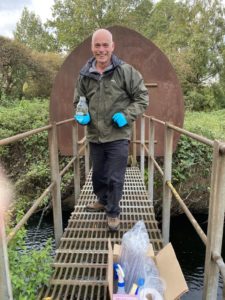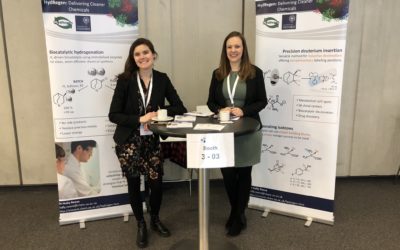Oxford Molecular Biosensors (OMB) is developing a 3D-printed waterside test kit which will reveal the presence of hazardous contaminants in minutes. OMB is aiming to revolutionise water quality testing with a portable kit that will allow water companies and environmental agencies to check for dangerous toxins at the riverbank in just minutes.
At the moment the company’s biosensor technology, like other existing testing services, relies on water samples being sent back to its Bicester laboratory. Unlike many existing test services, its innovative technology can test water quality without using potentially harsh chemicals or live fish models. Instead, biosensors for a variety of hazardous chemicals can be observed to see if they glow significantly brighter than their original state, or dim, revealing they have come into contact with a dangerous contaminant.

The tests can advise on acute toxicity in water in under 30 minutes, with the amount of light produced relative to how toxic the sample is. They are intended to be used by any organisation monitoring water quality, such as environmental agencies, water companies, industrial treatment plants and aquaculture businesses.
Testing in London, and beyond
The start-up has already begun working on several projects, including with Oxford University on the REACH programme, which aims to improve water quality for millions of people over the coming 5 years. The project has involved measuring water quality in parts of Bangladesh and Ethiopia and developing new models to predict hot spots and sources of toxicity. By the end of 2020, it hopes to start work on a new project closer to home, in London, CTO Cordelia Rampley reveals.
“We’re about to start working with the Environment Agency, looking at a potential role for the biosensors in water monitoring and re-use,” she explains.
“London is projected to have a substantial water shortage within ten years, and so some water agencies are considering taking treated grey water and pumping it back up stream so it can refill reservoirs. Before they can reintroduce the water, though, they need to consider the environmental impact, so they’re interested in how our biosensors could help.”
Portable, live testing
This is one of many scenarios where OMB believes its riverside testing technology will be able to help in-situ, perhaps as soon as by the end of 2021. Rather than require samples to be taken back to its Oxfordshire lab for analysis, companies and organisations will instead get a result in minutes.
“The aim is to freeze-dry the biosensors within cassettes for the testing kit so they could be sent anywhere in the world,” Rampley explains.
“We want to have an accessible, affordable kit and not re-invent the wheel. We think 3D printing is the future so we’re going to make our own kits in-house and test them out where we have contacts in China, Bangladesh and Ethiopia. We’ll then improve and refine until it’s ready for commercial sale.”
Oxford is the best, but expensive
OMB, like so many science-based start-ups in the area, is located in Oxfordshire because its co-founders met and worked together at Oxford University. In a path many spin-outs from Oxford University will find familiar, it remains in the area because of the proximity to the university for scientific collaboration. It also anticipates the city’s universities will help in its anticipated recruitment drive over the next three years as it expects to treble or quadruple its current staff of four.
There is a caveat, though, and that comes with the cost of office and lab space. The business has gone for a cost-effective option of new facilities at the Heyford Park Innovation Centre in Bicester. It is currently in no hurry to relocate, Rampley insists, but it does hope more office and lab space is made available so the city and county becomes a little more affordable to start-ups working on limited budgets.
About this case study - Powering up the Green Economy: Oxfordshire's role in building a cleaner future
Advanced Oxford would like to thank all of the companies that participated in this project for their time and for providing us with images which illustrate their technology and work. This case study was written by Sean Hargrave, working with Advanced Oxford.



